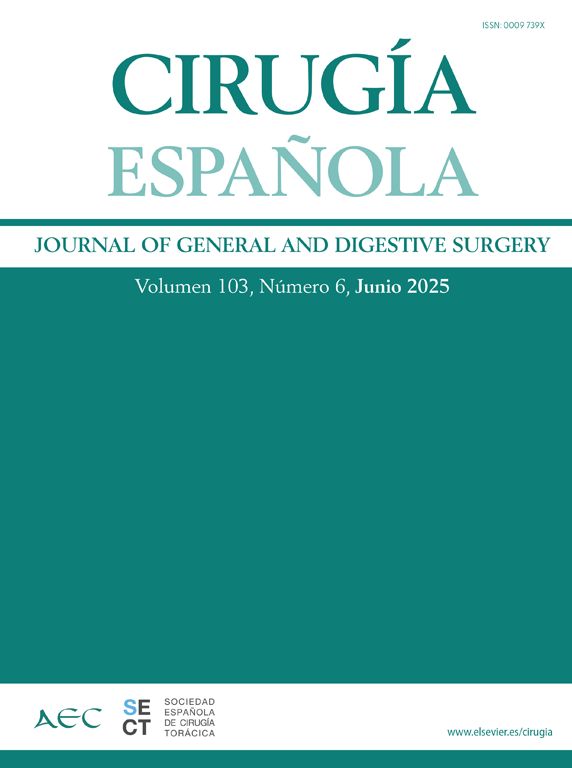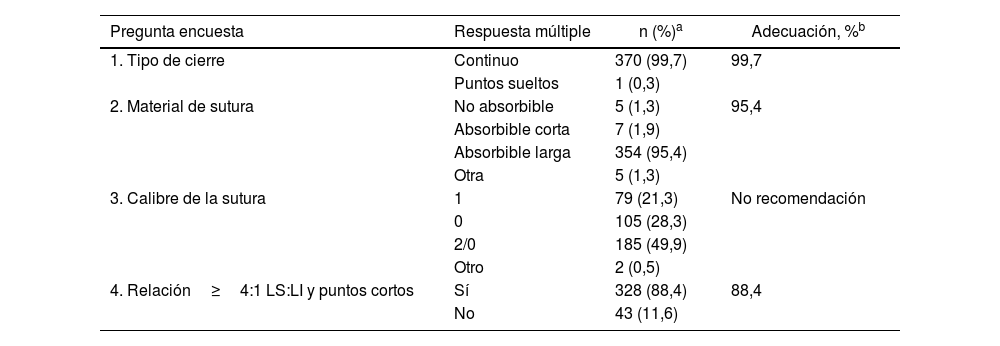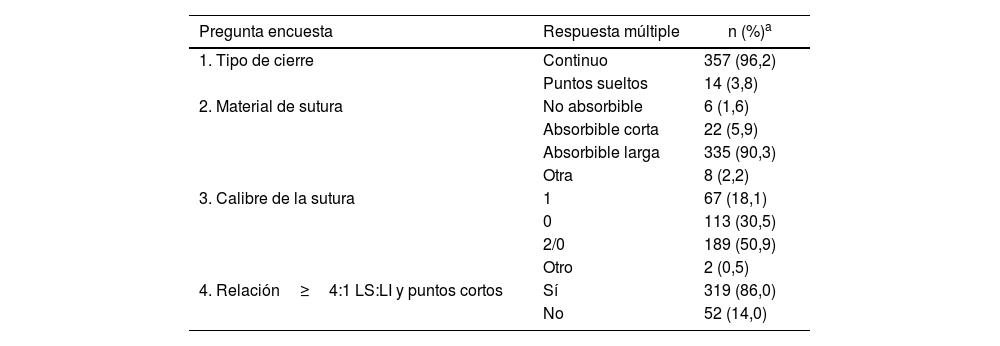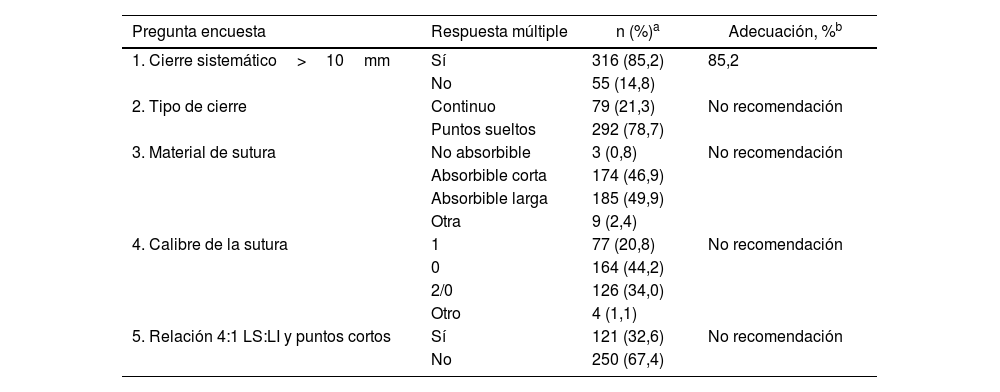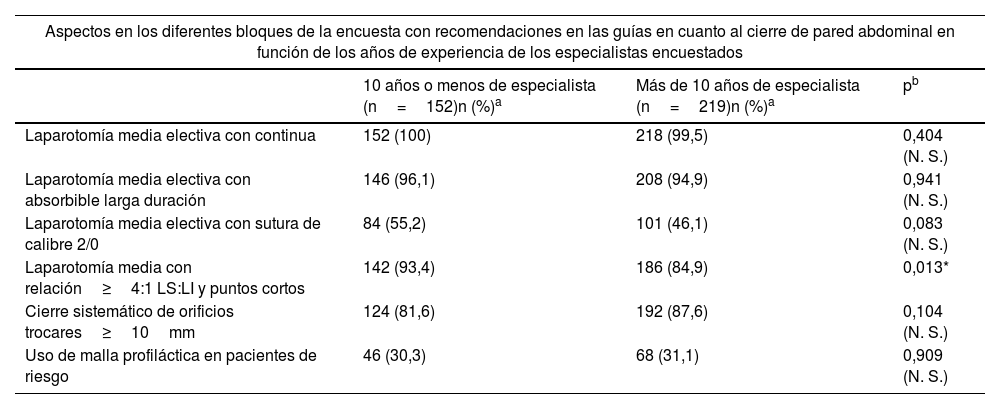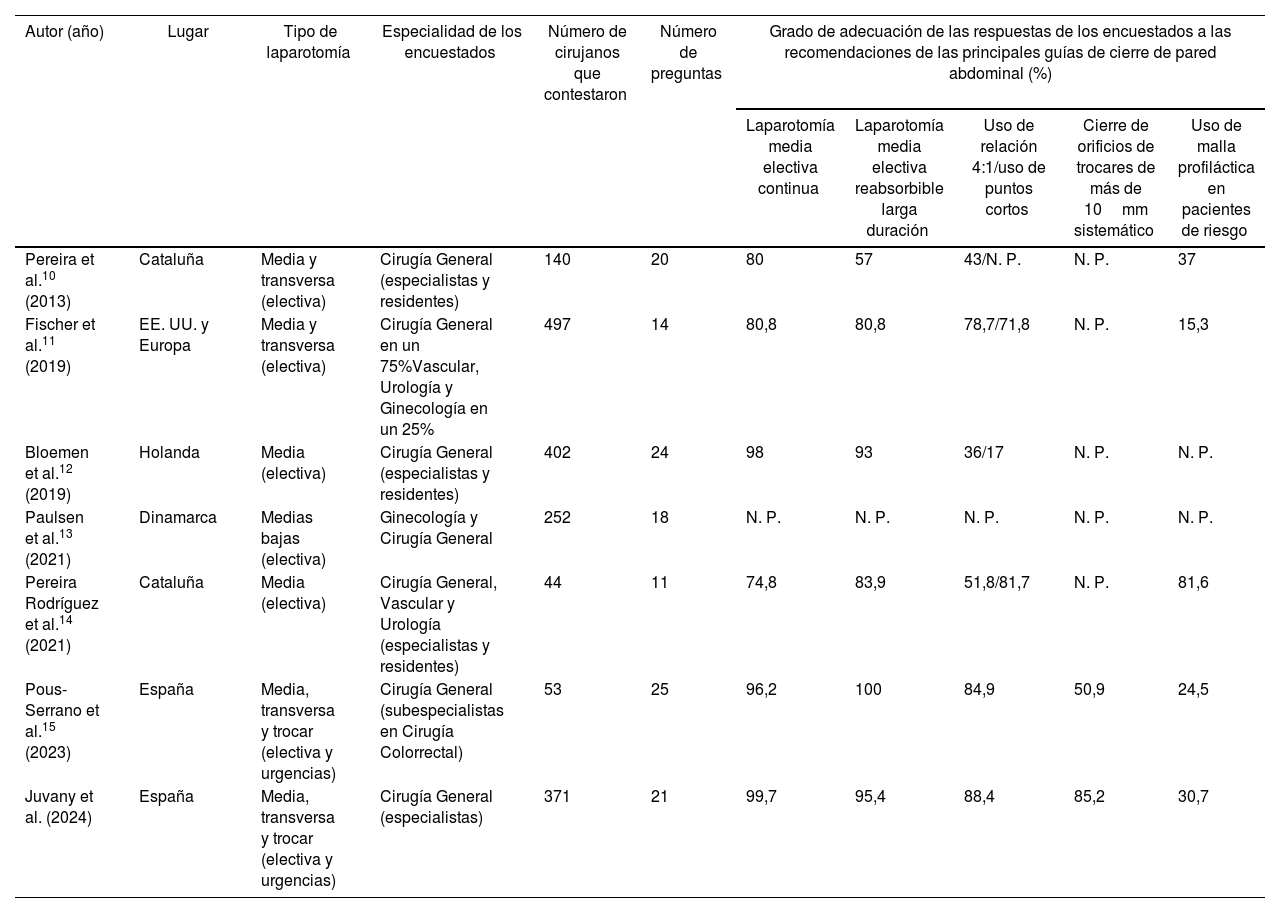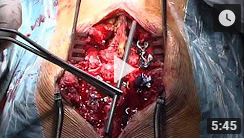El objetivo fue evaluar el conocimiento de cierre de pared abdominal en una cohorte de cirujanos generales especialistas miembros de la AEC y ver su adecuación a las recomendaciones actuales. Subanálisis en cuanto a años de especialización.
MétodosCuestionario individual de 21 preguntas de cierre de pared abdominal en contexto electivo y urgente.
ResultadosSe han recibido un total de 371 respuestas de cirujanos especialistas miembros de la AEC. El cierre de laparotomía media se realiza con sutura continua en un 99,7% y con materiales de absorción lenta en un 95,4%. Un 88,4% de los cirujanos refiere utilizar la relación igual o superior a 4:1 entre la longitud de la sutura y la longitud de la incisión y puntos cortos. Dichos resultados son equivalentes en laparotomía electiva transversa y urgente. Un 85,2% de los encuestados cierran los trocares de 10 o más milímetros sistemáticamente y un 30,7% utilizan malla profiláctica en pacientes de alto riesgo. Los cirujanos con menos de 10 años de experiencia utilizan más la relación≥4:1 entre la longitud de la sutura y la longitud de la incisión y puntos cortos (93,4 vs. 84,9%; p=0,013).
ConclusionesEl cierre de la pared abdominal entre los cirujanos generales miembros de la AEC es adecuado y ajustado a las recomendaciones, con una tendencia a mejorar entre los cirujanos con menor experiencia. Existe oportunidad de mejora en el uso de malla profiláctica en pacientes de riesgo.
The objective was to evaluate the knowledge of abdominal wall closure in a cohort of specialist general surgeons who are members of the AEC and to see its adequacy with current recommendations. Sub-analysis in terms of years of specialization.
MethodsIndividual questionnaire of 21 questions on abdominal wall closure in elective and urgent context.
ResultsA total of 371 responses were received from specialist surgeons who are members of the AEC. Closure of the median laparotomy is performed with continuous suture in 99.7% and with slowly absorbable materials in 95.4%. A percentage of 88.4% of surgeons report using the ratio equal to or greater than 4:1 between suture length and incision length and short stitches. These results are equivalent in transverse and urgent elective laparotomy. A percentage of 85.2% of the respondents systematically close trocars of 10mm or more and 30.7% use prophylactic mesh in high-risk patients. Surgeons with less than 10 years of experience use the ratio≥4:1 between suture length and incision length and short stitches more than surgeons with more experience (93.4 vs. 84.9%; p=0.013).
ConclusionsAbdominal wall closure among general surgeons who are members of the ACS is adequate and adjusted to the recommendations with a tendency to improve among surgeons with less experience. There is an opportunity for improvement in the use of prophylactic mesh in high-risk patients.



